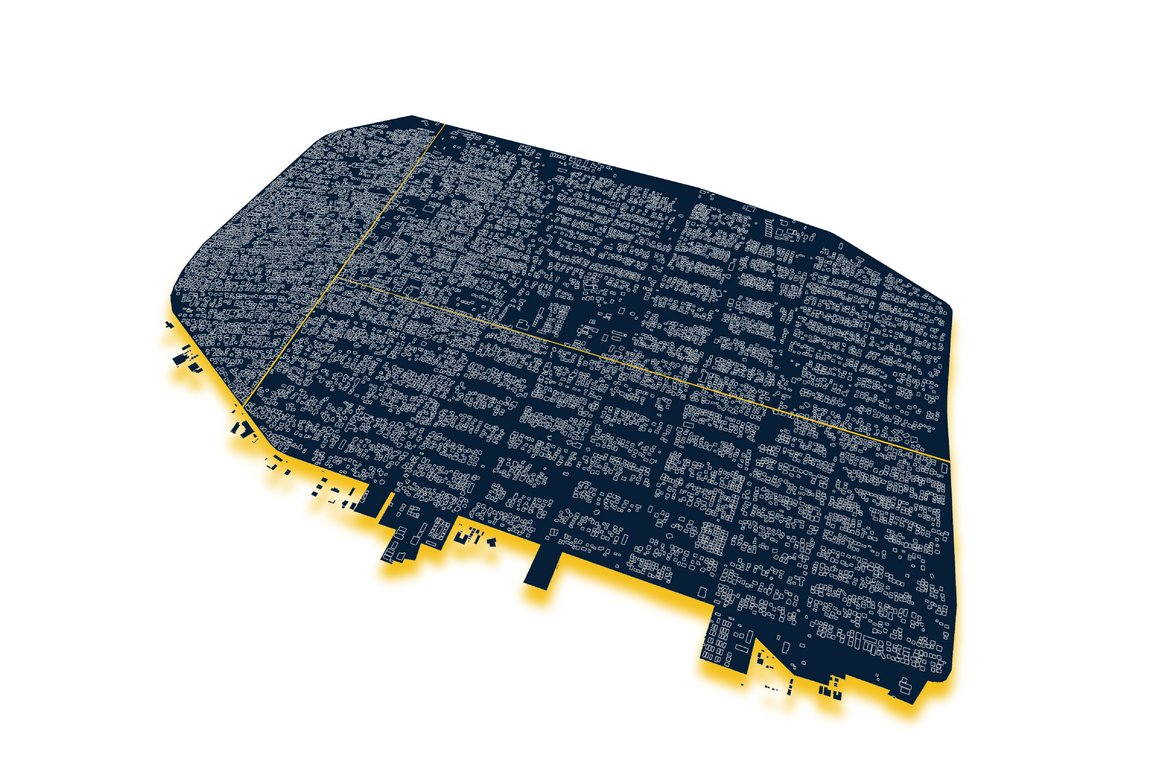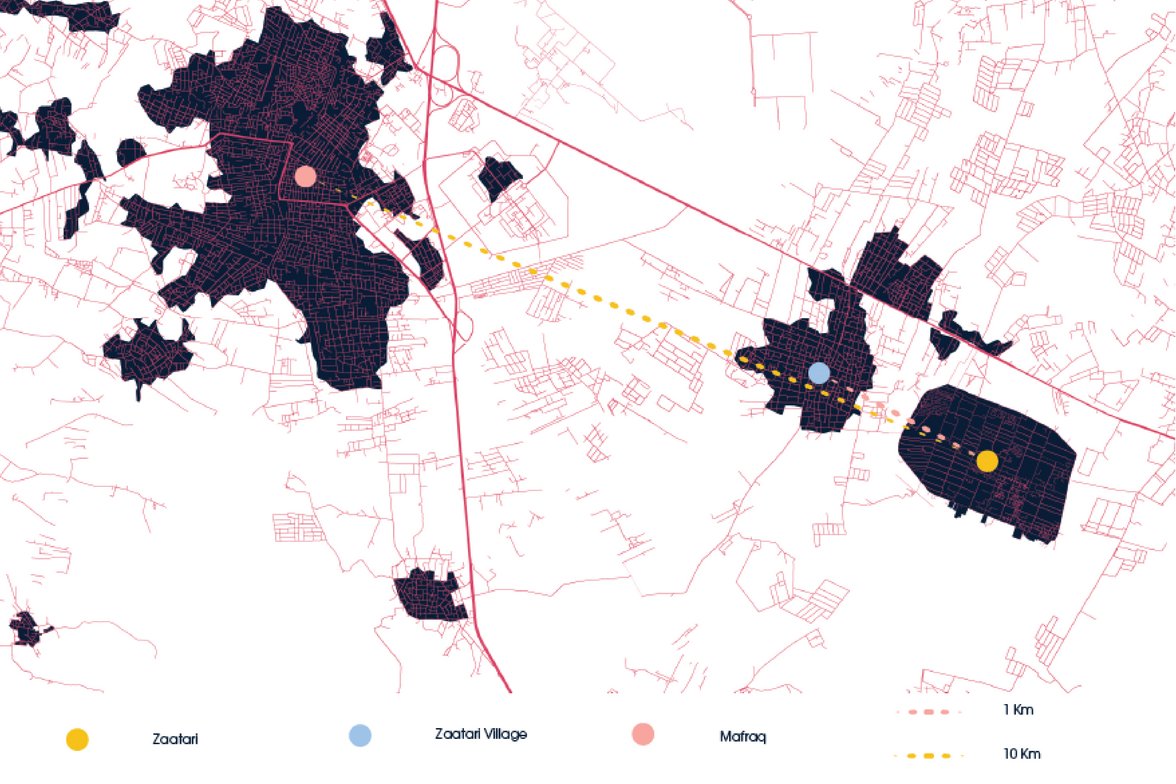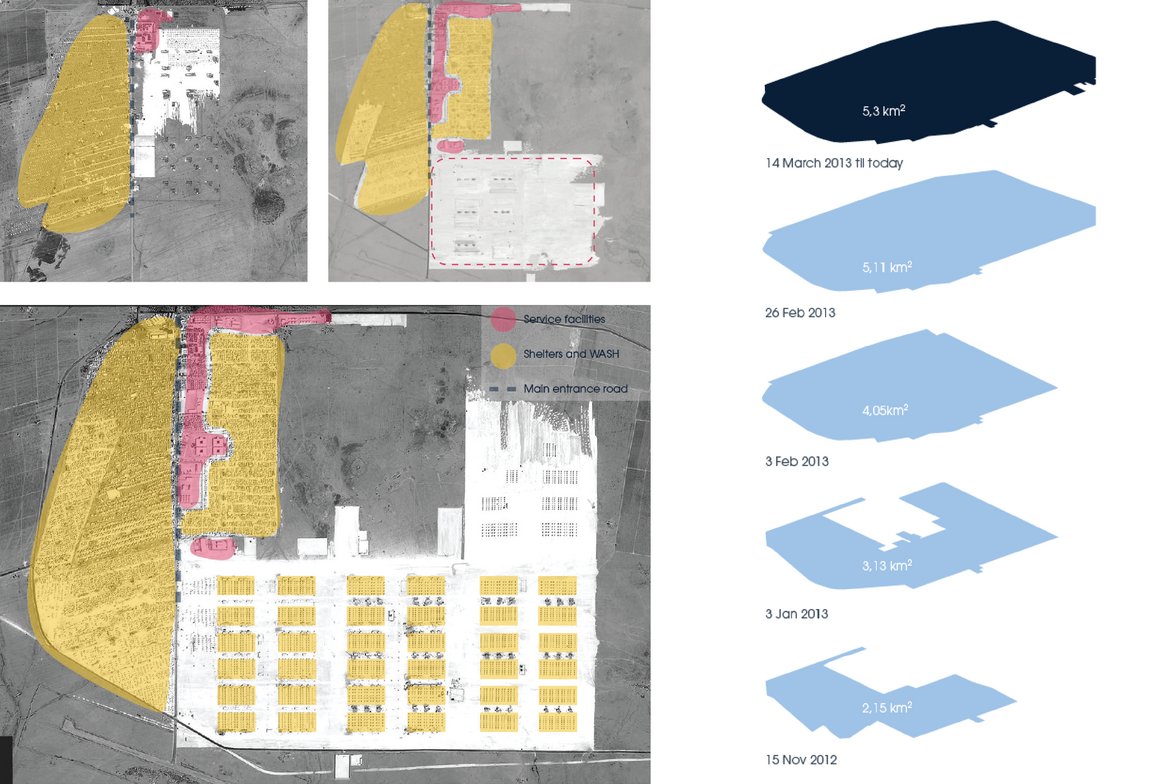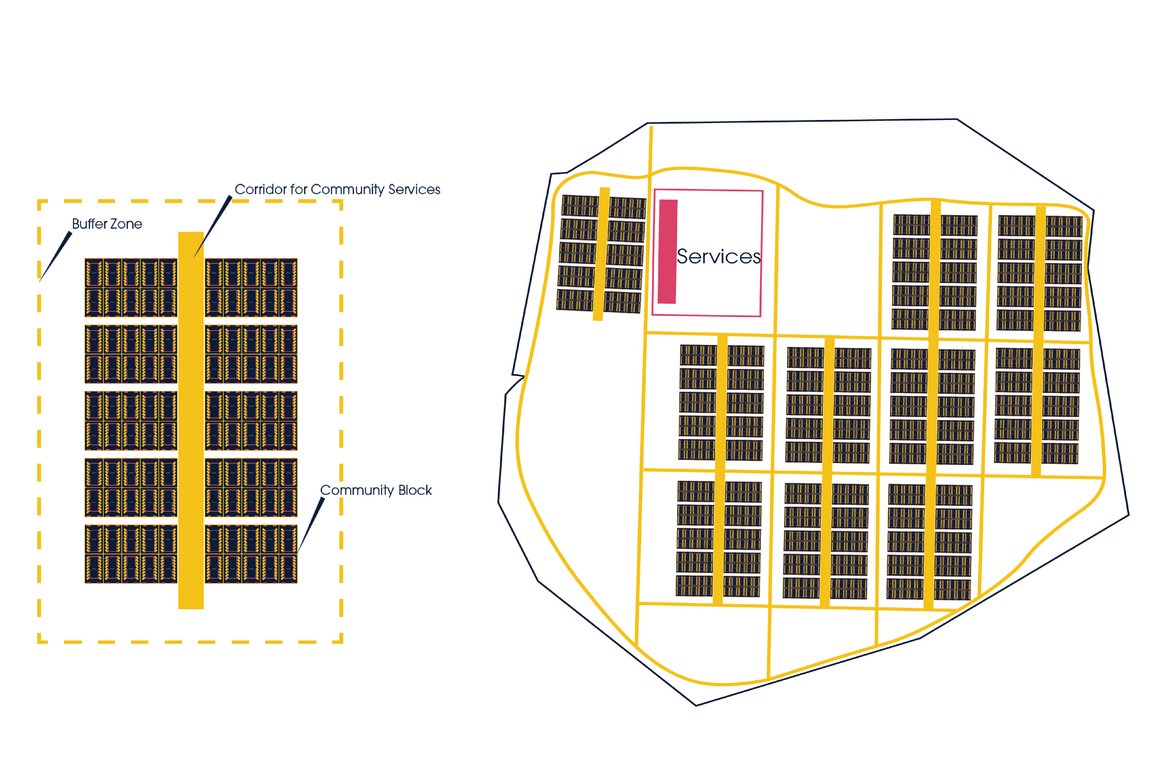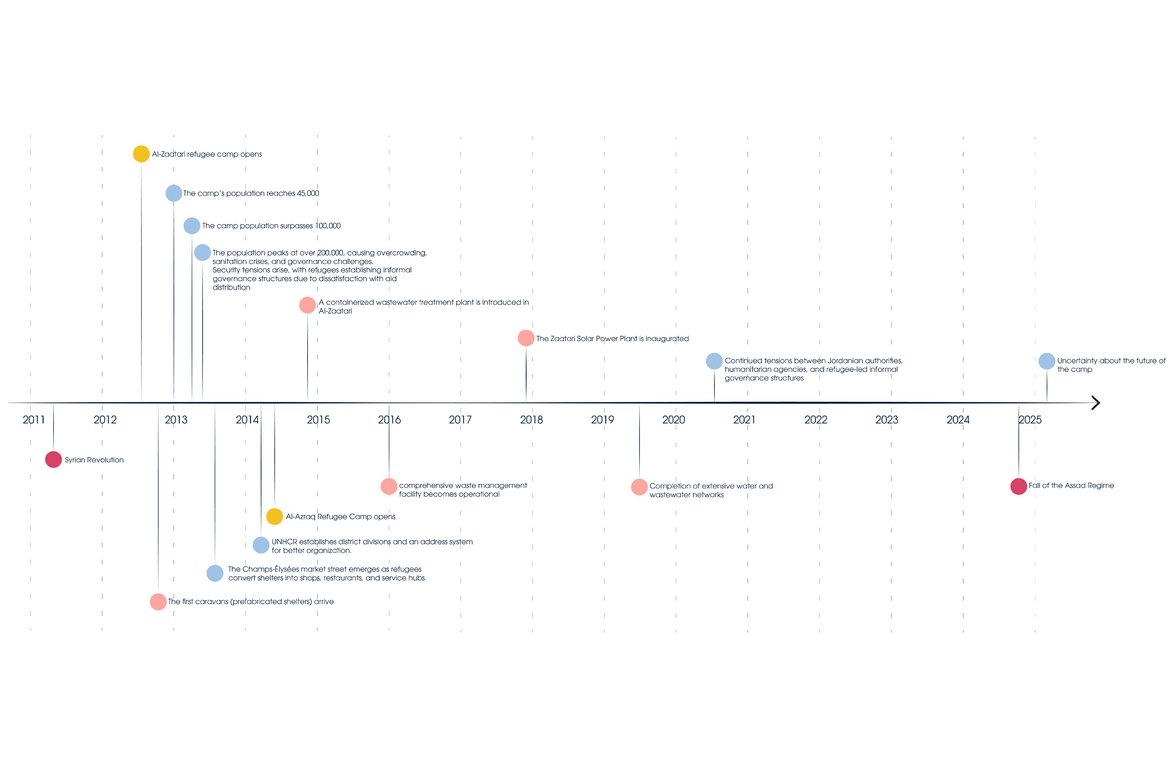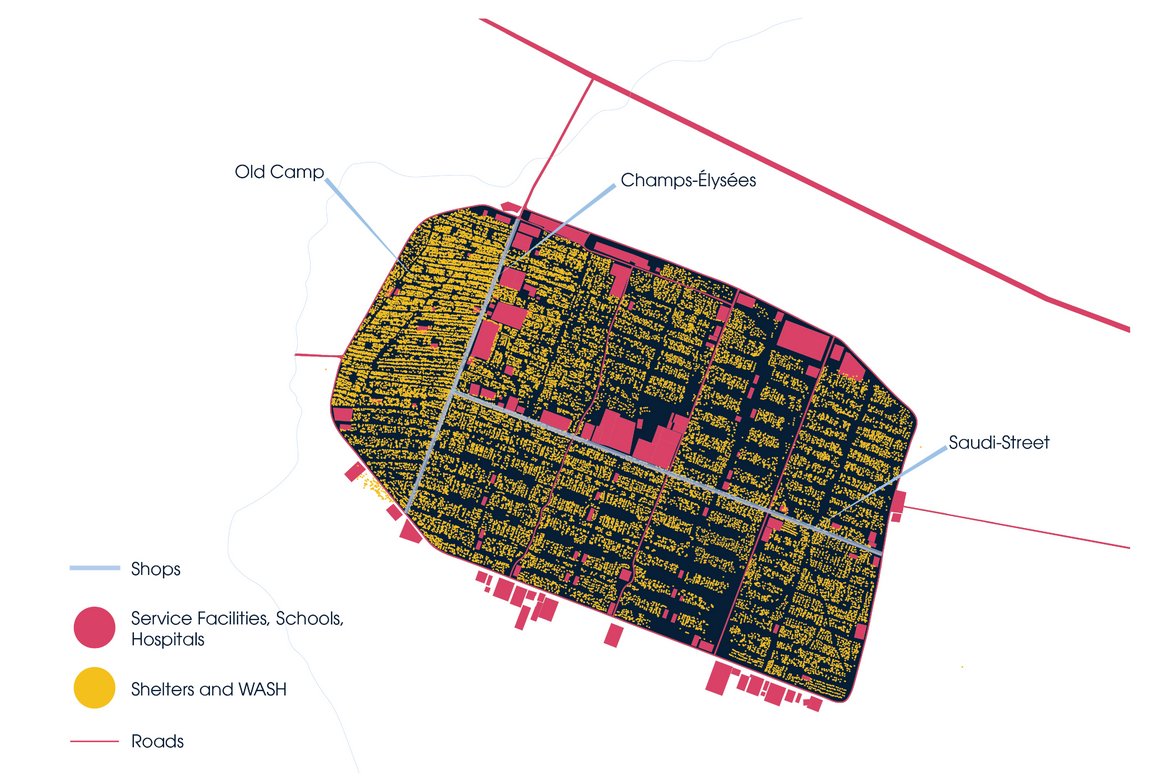Beyond the Grid
freie Masterthesis (WS24)
Mudar Alsaid
Balancing Emergency Response and Urbanisation in Refugee Camps – Insights from Zaatari
Although refugee camps are usually intended as short-term solutions in an emergency situation, many of them turn into long-term settlements. Zaatari, one of the most well-known examples, was planned to host 10,000 Syrians in Jordan in 2012; however, its population quickly rose to over 200,000. As a result, the camp witnessed growth and morphological changes similar to those of informal urban settlements.
Humanitarian organisations use rigid grid-based layouts to deliver aid efficiently. The UNHCR Emergency Handbook, for example, focuses on standardised emergency response. Chapter 12, which spans only about 20 pages of the 600-page document, discusses site planning. It mainly addresses technical aspects without looking at how real-life examples evolve to cater to their spatial needs.
In Zaatari, people started reshaping the camp to fit their daily needs. Caravans were moved to form family clusters with small courtyards. A central commercial street, informally called the “Champs-Élysées,” appeared as residents opened shops without waiting for approval. Many built their infrastructure, like drainage systems or electricity lines, often with little regulation.
A comparison with Al Azraq—another camp in Jordan, planned entirely in advance—shows the limits of top-down planning. While it is more organised, it doesn’t offer the same flexibility for adaptation and growth. Zaatari, although described as chaotic, managed to do so.
Observations from satellite images, interviews, and site analyses show how residents negotiate and reshape space. UNHCR’s modular layouts don’t always reflect actual living habits. Shelters are packed close together, and safety rules like firebreaks are often bypassed when families rearrange the space.
Although a grid-based standardised design is imperative in cases like Zaatari, where daily arrivals reached as many as 1500 people, site planners should account for the urbanisation process and what needs to be done to make it possible, especially since the protraction of refugee situations is very common.
